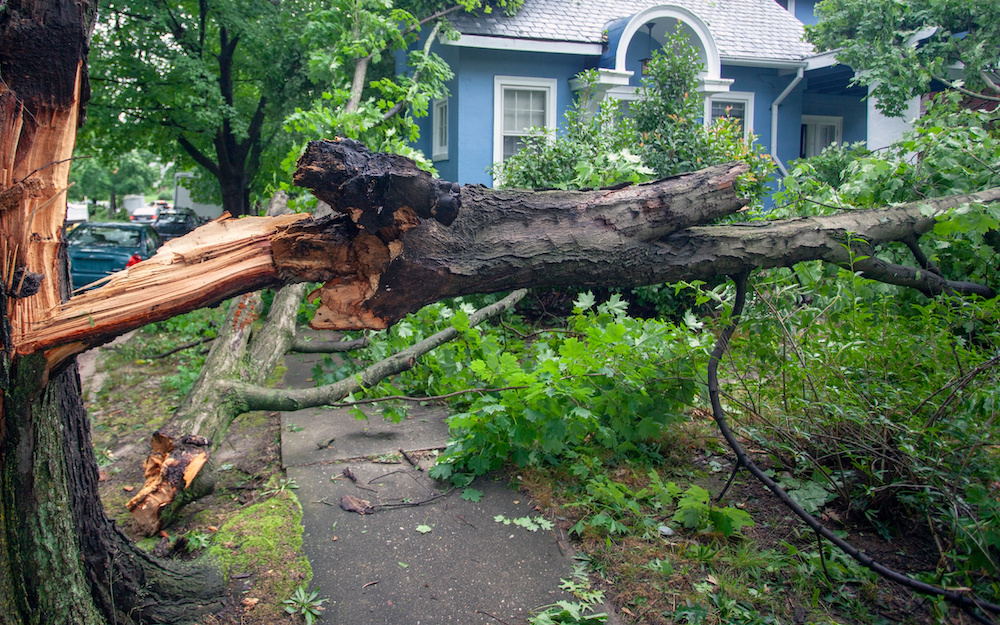
Many Americans tune out coverage of climate change, thinking the risks it poses will affect them “someday.” But with dangerous storms, excessive heat and droughts becoming more frequent and extreme, consumers are already feeling the pinch from climate change when it comes time to pay their homeowners insurance premiums.
From one extreme to the other
Some regions of the U.S. are more vulnerable than others to dangerous weather. California has gorgeous mountains and stately trees, but summer brings devastating wildfires. The Gulf and Atlantic coasts have sun-drenched beaches…and hurricanes. The upper Midwest is America’s farm belt, with the mighty Mississippi bisecting its rolling plains, but tornadoes, blizzards and floods wreak mayhem annually.
These weather phenomena have happened for many years but are becoming increasingly frequent and intense. And as real estate development spreads, more property lies in the path of these catastrophes.
By the numbers
Insurance companies set premium rates based on a rolling year-by-year amount of claims paid and the frequency of events in an area. That’s why increasingly destructive storms lead to rising homeowners insurance premiums. In recent years, the rising prices of construction materials restricted by supply chain kinks have also increased insurance costs. Altogether, Americans paid 8.4 percent more in property insurance premiums between the third quarter of 2020 and the same period in 2021.
Attracted to trouble
Some of the highest-risk locations in the country have the fastest-growing populations. In other words, people are moving into danger zones where homeowners insurance premiums are rising quickly.
Florida has long been attractive to retirees and others with its mild winters, lush greenery, golf, tennis and water recreation. Because it’s located in the tropics, however, Florida has a bullseye on it when it comes to hurricanes, causing its insurance rates to rise. The same holds true for the rest of the Gulf Coast and northward along the Atlantic seaboard.
In Florida, insurance rates have increased so much, sometimes into the tens of thousands per year, that many retirees on fixed incomes can no longer afford to pay their premiums.
What can you do?
You are not entirely helpless in the face of relentless insurance cost increases spurred by climate change. Here are some steps you can take to keep your premiums down.
- If you live in a hurricane-prone area and your house does not already have “hurricane straps” in the attic, investigate having them retrofitted. Hurricane straps are galvanized metal braces that reinforce the junction between roof trusses and the top plate of outside walls. They fortify your roof against strong winds.
- Have your roof inspected annually if your area is a target for hurricanes. Catching slight damage to shingles, flashing and gutters early prevents more extensive damage later during a storm.
- In wildfire-prone areas, keep brush cleared from beneath larger canopy trees. Clear brush within 150 feet of your house and cut tree limbs that hang over your roof. Cut down high grass. Gather grass, brush and tree trimmings and have them hauled away.
- Observe county burn bans strictly in areas prone to wildfires. According to the National Park Service, human activity triggers 85 percent of wildfires. So don’t be the cause of a wildfire emergency.
- Take advantage of “bundle” insurance rates, using one company for all your property insurance for cars and homes.
If you live near a river, creek or lake along the Gulf or Atlantic coast, you should also talk to your insurance agent about flood insurance. This won’t lower your insurance costs — homeowners insurance doesn’t cover floods caused by overflowing bodies of water, so you need flood insurance in addition to your homeowners’ coverage. But it will protect you from a threat that increases with climate change. Flood insurance is sold separately by the National Flood Insurance Program.


